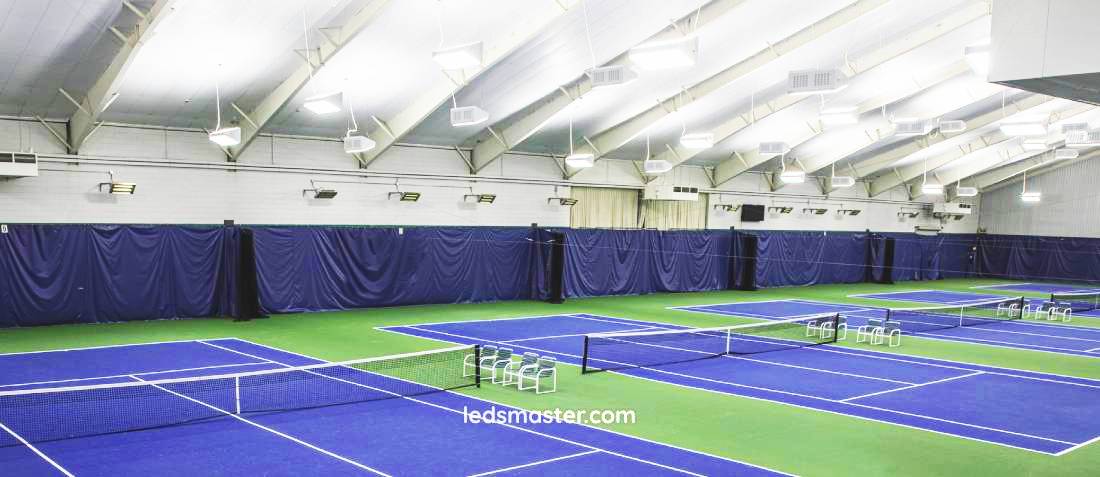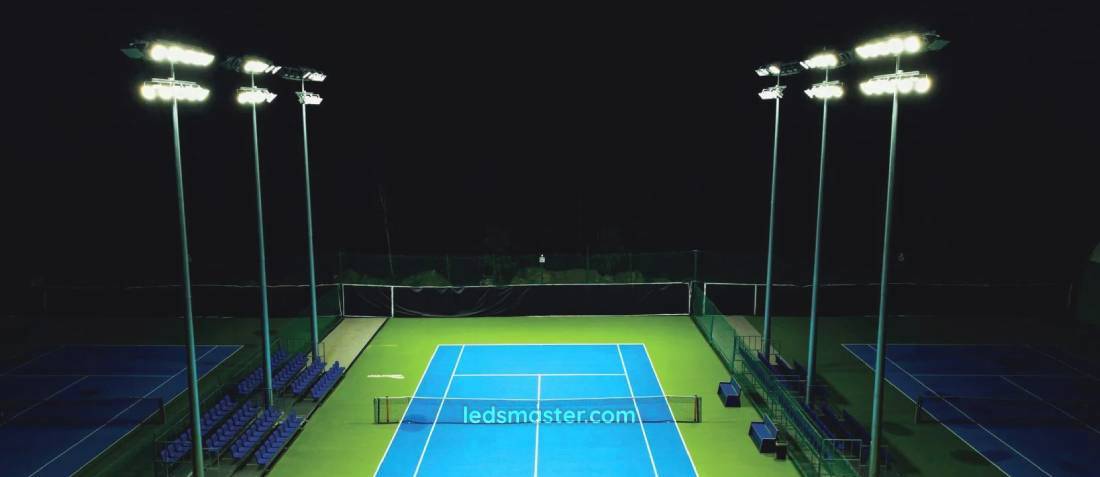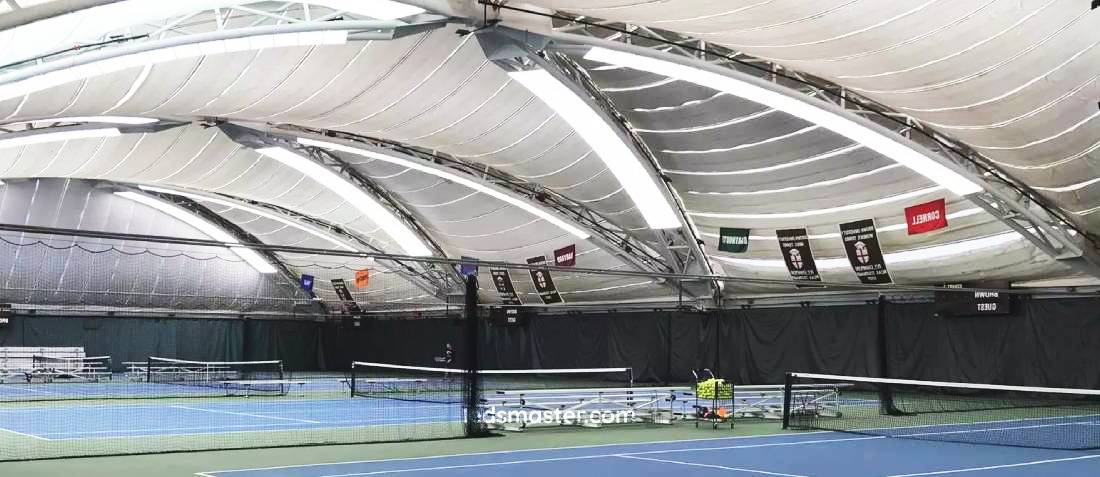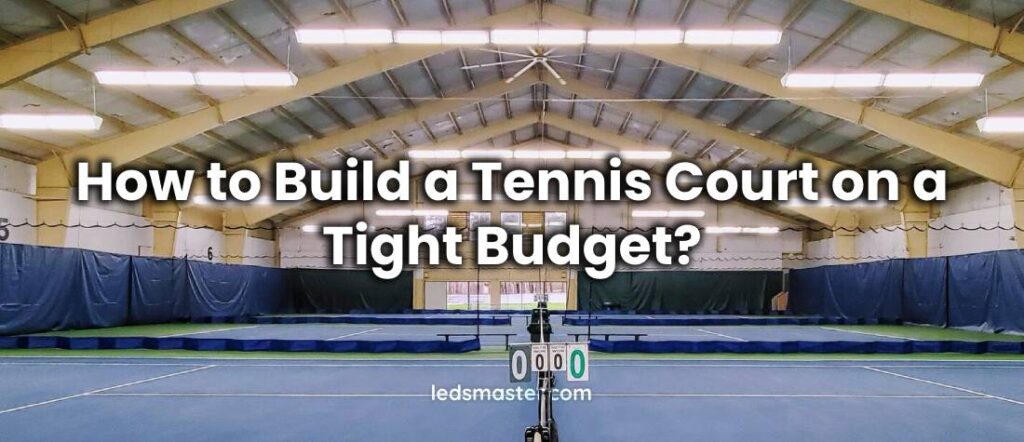Building a tennis court can seem like a daunting and expensive project, but with the right planning and resourcefulness, it is entirely possible to create a high-quality facility without breaking the bank. A personal tennis court offers the convenience of practicing whenever desired and can enhance property value. Understanding the steps to construct a tennis court affordably makes the process more accessible.
This comprehensive overview of the components of a tennis court highlights the various elements that contribute to its functionality and enjoyment. Each component plays a unique role, allowing players to enjoy the sport in a well-designed and maintained facility. By carefully considering these aspects, constructing a tennis court can become a rewarding investment for tennis enthusiasts.
| Component | Estimated Cost (USD) | Notes |
|---|---|---|
| Surface | ||
| Hard Court | $25,000 – $40,000 | Includes installation of asphalt or concrete surface. |
| Clay Court | $20,000 – $35,000 | Requires regular maintenance; initial cost includes materials. |
| Grass Court | $30,000 – $50,000 | Higher maintenance costs; includes soil preparation and grass installation. |
| Synthetic Surface | $20,000 – $40,000 | Low maintenance; varies by type of synthetic material. |
| Fencing | $5,000 – $15,000 | Costs depend on material (chain link, wood, vinyl) and height (typically 10 feet). |
| Net Posts and Nets | $300 – $1,000 | Prices vary based on materials and net quality. |
| Lighting | ||
| Lighting Fixtures | $2,000 – $10,000 | LED fixtures are more expensive but save on electricity. |
| Lighting Poles | $1,000 – $3,000 | Costs vary by height and material. |
| Seating | $500 – $5,000 | Costs depend on type and number of benches or chairs. |
| Storage Shed | $1,000 – $3,000 | Basic shed for equipment storage. |
| Court Markings | $500 – $1,500 | Painting lines and markings; may vary based on surface type. |
| Maintenance Tools | $200 – $1,000 | Brushes, rollers, and cleaning equipment. |
| Windbreaks | $1,000 – $3,000 | Installation of mesh or solid panels to reduce wind interference. |
| Scoreboard | $500 – $2,500 | Manual or electronic options available. |
| Shelters/Gazebos | $1,500 – $5,000 | Cost varies based on design and materials used. |
Table of Contents
TogglePlanning Your Tennis Court
Assessing Available Space
Before diving into the construction of a tennis court, evaluating the available space is vital. The ideal dimensions for a standard tennis court are 78 feet long and 36 feet wide for doubles play, or 27 feet wide for singles. Space must be allotted not only for the court itself but also for surrounding areas, such as walkways and seating. Take into account existing landscaping, trees, and other structures that might impact the design or placement of the court.
Choosing a Location
Selecting the right location for a tennis court involves several factors. Sunlight exposure is crucial; ideally, the court should be oriented north-south to minimize sun glare during play. The wind direction also plays a role; positioning the court to reduce wind interference can enhance the playing experience. Finally, proper drainage is necessary to prevent water accumulation on the court surface, which could lead to deterioration over time.
Budgeting
Setting a Realistic Budget
Once the planning phase is complete, setting a realistic budget becomes the next priority. Estimating costs involves considering materials, labor, and ongoing maintenance. Break down the project into individual components, such as surface materials, fencing, lighting, and accessories, to get a clear idea of the overall expenses. Additionally, prioritize features; focus on what is truly needed for initial construction and consider upgrades later.
Finding Financing Options
Exploring financing options can help ease the financial burden of constructing a tennis court. Personal savings can be a straightforward source of funding, but if more substantial financing is required, consider looking into loans or grants specifically designed for sports facilities. Community funding programs or local government initiatives may offer resources to assist in financing sports projects.
Components of a Tennis Court

Surface Types
The surface of a tennis court plays a significant role in the overall playing experience, and various types are available to cater to different preferences and budgets.
Hard Courts
Hard courts are typically constructed from asphalt or concrete. These surfaces provide durability and require minimal maintenance compared to other options. Hard courts offer a consistent bounce and are widely popular among recreational and professional players. They are often the most economical choice, as they do not require regular watering or extensive upkeep.
Clay Courts
Clay courts, made from crushed brick, shale, or stone, provide a distinct playing experience. They tend to slow down the ball and result in a higher bounce, making them ideal for players who enjoy longer rallies. While clay courts offer excellent playability, they do require regular maintenance, including rolling and watering, to keep the surface in optimal condition. This maintenance can add to the overall cost of ownership.
Grass Courts
Known for their classic aesthetic, grass courts present a unique challenge for players due to their soft surface, which can lead to a fast game with low bounce. Maintaining a grass court demands significant effort, as it requires regular mowing, watering, and treatment for weeds and pests. While they are visually appealing, the upkeep can make grass courts a more expensive option over time.
Synthetic Surfaces
Synthetic surfaces, composed of materials like acrylic or rubber, combine the benefits of various natural surfaces while reducing maintenance needs. These courts mimic the appearance and feel of grass or clay but are designed for durability and lower upkeep. Synthetic surfaces can provide a consistent playing experience, making them an appealing choice for many tennis enthusiasts.
Fencing
Fencing is a critical component of a tennis court, serving both practical and aesthetic purposes.
Height and Material
The fence helps keep balls in play and defines the boundaries of the court. Various materials can be used, including chain link, wood, and vinyl. Chain link fences are often favored for their affordability and visibility. They are durable and relatively easy to install. Wooden fences can enhance the aesthetic appeal of the court but may require more maintenance. Vinyl fences are low-maintenance and weather-resistant, making them a good option for many environments.
Gates
Including access gates in the design is essential for players and maintenance personnel. Gates should be strategically placed to ensure easy access to the court without disrupting play. They should be sturdy and well-fitted to maintain the overall security of the enclosure.
Net Posts and Nets
Proper net posts and nets are indispensable for any functioning tennis court.
Net Posts
Typically made from steel or aluminum, net posts must be sturdy enough to withstand the tension of the net. They should be set at the correct height, which is 3.5 feet at the center and 3 feet at the ends. Proper installation ensures that the net remains taut during play, providing a consistent experience for players.
Nets
The nets used in tennis are generally 42 feet long and designed to withstand the rigors of regular use. They should be made from durable materials to ensure longevity. Regular inspection for wear and tear is important to maintain the quality of the court. Nets should be easily adjustable to accommodate different playing styles and conditions.
Lighting
Adequate lighting is vital for evening play, allowing players to enjoy the court after dark.
Lighting Fixtures

Installing energy-efficient lighting fixtures ensures that players can see the court clearly without incurring high electricity costs. LED lights are a popular choice due to their longevity and low energy consumption. When planning the lighting layout, it is important to position fixtures to minimize shadows and provide uniform illumination across the entire playing area.
Poles
Lighting poles should be strategically placed around the court to ensure even coverage without interfering with gameplay. The height and spacing of these poles are critical to achieving optimal lighting conditions, enhancing visibility during matches.
Surrounding Area
Creating a pleasant environment around the tennis court can enhance the overall experience.
Seating
Incorporating seating options, such as benches or chairs, provides players and spectators with comfortable areas to relax before and after matches. These seating arrangements can be simple or more elaborate, depending on the overall design and budget.
Landscaping
Maintaining the area surrounding the court adds to its aesthetic appeal. Thoughtful landscaping with grass, shrubs, or trees can create an inviting atmosphere. However, it is essential to position these elements carefully to avoid interfering with gameplay or obstructing views.
Drainage Systems
Effective drainage is vital to maintain the integrity of the tennis court.
Proper Drainage
Implementing a proper drainage system helps prevent water accumulation on the court surface. This can be achieved through grading the site and installing drainage solutions to direct water away from the court. Adequate drainage is crucial to protect the court from damage and ensure playability, especially after rain.
Surface Drainage
Attention should also be given to the slope of the court and surrounding area to facilitate runoff. Properly designed drainage can minimize maintenance issues and enhance the lifespan of the court.
Equipment Storage
Having a designated space for storing tennis equipment is practical and helps keep the court area organized.
Storage Shed
A simple storage shed can serve as a space to keep nets, balls, and maintenance tools secure and out of the elements. This storage solution ensures that equipment is easily accessible when needed while maintaining a tidy environment around the court.
Racks and Holders
Installing racks for nets and holders for other equipment keeps the court area organized and extends the lifespan of the gear. Proper storage solutions prevent wear and tear on equipment, ensuring everything is in good condition for use.
Court Markings
Accurate court markings are necessary for gameplay and enhance the overall appearance of the court.
Lines and Markings
Court markings should be painted clearly and in accordance with official standards. The lines typically measure 2 inches wide and should be distinct against the court surface. Using contrasting colors helps players easily see the lines, which is especially important during competitive play.
Color Choices
The color of the markings can significantly impact visibility, particularly in bright sunlight. Choosing colors that stand out against the court surface enhances the playing experience, making it easier for players to stay within the bounds of the court.
Windbreaks
In areas prone to wind, installing windbreaks can improve the playing experience.
Windbreak Fencing or Screens
Windbreaks, which can be made from mesh or solid panels, help reduce wind interference during play. By strategically positioning these barriers, players can enjoy more consistent playing conditions, leading to a better overall experience.
Maintenance Tools and Equipment
Regular maintenance is necessary to ensure the court remains in good condition over time.
Court Brushes and Rollers
For clay courts, specific maintenance tools, such as rollers and brushes, are essential to keep the surface in top shape. These tools help maintain the texture and playability of the court, ensuring that players can enjoy optimal conditions during matches.
Cleaning Equipment
Hard courts require regular cleaning to prevent the buildup of dirt, leaves, or debris. Utilizing brooms, leaf blowers, or pressure washers keeps the playing surface clean and enhances safety. Keeping the court clean not only improves the playing experience but also helps extend the life of the surface.
Additional Features
Certain additional features can enhance the functionality and enjoyment of the tennis court.
Scoreboards
Having a scoreboard can elevate the playing experience, especially during matches or tournaments. Whether manual or electronic, scoreboards provide players and spectators with easy access to scores and match information.
Shelters or Gazebos
For enhanced comfort, including shelters or gazebos provides relief from sun or rain during play. These structures create a welcoming atmosphere for players and spectators alike, adding to the overall enjoyment of the tennis experience.
This comprehensive overview of the components of a tennis court highlights the various elements that contribute to its functionality and enjoyment. Each component plays a unique role, allowing players to enjoy the sport in a well-designed and maintained facility. By carefully considering these aspects, constructing a tennis court can become a rewarding investment for tennis enthusiasts.
Construction Steps

Preparing the Site
Before construction begins, preparing the site is necessary to create a solid foundation for the tennis court. Clear the area of any debris, vegetation, or obstacles. After clearing, leveling the ground is vital; a flat and stable surface prevents issues with water drainage and ensures a smooth playing surface. Depending on the original condition of the land, grading may be required to achieve the proper slope.
Installing the Base Layer
A solid base layer is crucial for the longevity and playability of the court. Various options exist, including gravel and sand. Gravel is a popular choice for hard courts, as it provides excellent drainage and stability. A depth of at least 4-6 inches is recommended for the base layer to support the surface material effectively. Once the base is installed, compact it thoroughly to prevent settling over time.
Adding the Playing Surface
After the base layer is prepared, it is time to install the playing surface. For hard courts, pour asphalt or concrete and ensure a smooth finish. If opting for a grass or clay surface, the installation process will differ and may require additional materials and expertise. Follow guidelines specific to the surface type selected, as each surface has unique installation requirements. Once the surface is in place, allow it to cure properly before using the court.
Installing Fencing and Net Systems
Fencing installation should occur after the surface is complete. Begin by marking the perimeter and setting the fence posts securely in the ground. If using a chain link fence, roll out the material and attach it to the posts, ensuring it is taut to prevent sagging. Installing net posts requires similar attention to detail; position them correctly at the center of the court and ensure they are anchored securely to withstand the tension of the net.
Setting Up Lighting Systems
If lighting is part of the design, installation should occur last. Start by determining the optimal pole locations for even illumination across the court. Install poles according to manufacturer specifications and ensure they are securely anchored. Once the poles are in place, attach the lighting fixtures and connect them to a power source. Test the lighting system to ensure it provides adequate coverage for evening play.
Cost-Saving Strategies
Funding Options
Exploring funding options can significantly reduce the overall costs of building a tennis court. Community grants and funding programs may be available through local governments or sports organizations. These programs often support recreational facilities, making them a valuable resource for budget-conscious builders. Crowdfunding platforms can also be an innovative way to gather community support and financial contributions.
Where to Buy Materials
Finding affordable materials can drastically lower expenses. Local suppliers often offer competitive prices on necessary items, while big-box home improvement stores frequently have sales or clearance sections. Online marketplaces can also be an excellent resource for sourcing second-hand materials. Keep an eye out for used court equipment, such as nets or lighting, that may be available at a fraction of the cost.
Conclusion
Building a tennis court on a budget requires careful planning, resourcefulness, and a willingness to learn. By assessing space, selecting cost-effective materials, and considering DIY options, creating a personal tennis facility becomes an attainable goal. With proper maintenance and ongoing care, a budget-friendly tennis court can provide enjoyment for years to come, making it a rewarding investment in both fitness and leisure.

